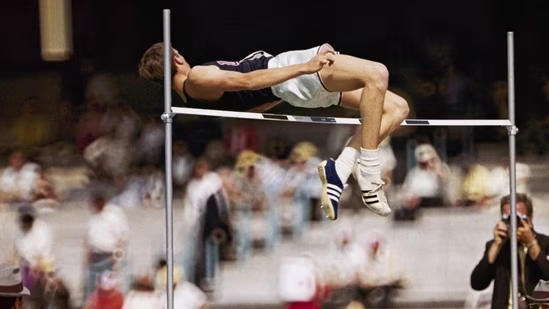Dick Fosbury, the man who revolutionised high jump, dies aged 76
When Dick Fosbury left 80,000 awestruck fans gasping in the altitude at the Mexico Olympics, showing the world a new way to fight gravity on the athletic field, his US compatriots Neil Armstrong and ‘Buzz’ Aldrin were still a year away from becoming the first to walk on the Moon.  PREMIUM
PREMIUM
Just 21, Fosbury took the high jump to rarified heights alright on October 20, 1968, winning gold with an Olympic record 2.24m, but the new technique he employed still ranks him as an innovator par excellence and sports revolutionary who is still cited as an example, across sports disciplines to management.
The man who engineered arguably the greatest sports innovation died on Sunday after a recurrence with lymphoma, according to his agent.
The Mexico Olympics for decades has been regarded as the Bob Beamon Games, the 22-year-old US jumper’s ‘leap of the century’, the winning effort of 8.90m, seen as a freak achievement in the rarified atmosphere. It stood until Mike Powell jumped 8.95m at the 1991 Tokyo world championships.
Fosbury’s achievement though transcended distance and continues to stand the test of time. ‘Fosbury Flop’, the name given to the new jumping technique he unleashed in Mexico, was coined by a journalist more to put down a style seen as a fish flopping than a champion soaring.
The technique in an event that has been part of the modern Olympics from the beginning went from standing to scissors to straddle to the western roll. Fosbury, a civil engineering student from Oregon who had failed in early attempts at sports excellence, introduced principles of mechanics to his own technique of jumping with his back to the bar. He took off at an angle, bent into a “J” shape to catapult over the bar and land headfirst. It helped that the landing area had gone from sand to sawdust to foam by then.
Fosbury, having failed in football and basketball, took up high jump. He was a fan of USSR’s Valery Brumel, the 1964 Tokyo Olympics high jump champion who broke the world record multiple times. Initially, Fosbury used the scissors style – the jumper clears the bar in an almost sitting position) before deciding to experiment, using his hips to clear the bar. He ignored advice that it could lead to serious injury, and pushed on after getting confirmation he won’t break any rule.
Fellow jumpers at Mexico took off from the foot nearest to the bar, but Fosbury, wearing different coloured shoes, had discovered the efficiency of jumping with the centre of gravity staying lower than the bar. “If they get into that perfect arch, it’s a mechanical advantage to use that technique,” he said after his Mexico high.
Fosbury never returned to another Olympics, but his technique spread worldwide.
At the 1972 Munich Olympics, 28 of the 40 jumpers were using the Fosbury Flop while the Montreal Games in 1976 was the last time a jumper won using a technique other than the Flop, reports AP.
The term Fosbury Flop is credited to the Medford Mail-Tribune, which headlined its report “Fosbury Flops Over the Bar” after a high school meet. The reporter wrote that Fosbury looked like a fish flopping in a boat, the New York Times said in its obituary. “It’s poetic. It’s alliterative. It’s a conflict,” it quoted Fosbury as having said.
“I think quite a few kids will begin trying it my way now,” he told the paper in 1968. “I don’t guarantee results, and I don’t recommend my style to anyone. All I say is, If a kid can’t straddle, he can try it my way.”
In Mexico, only three were left at the height of 2.20m. USSR’s Valentin Gaavrilo could not clear 2.22m while American Ed Caruthers failed at 2.24, which Fosbury cleared to triumph.
“The world legend is probably used too often,” US sprint great Michael Johnson tweeted. “Dick Fosbury was a true LEGEND! He changed an entire event forever with a technique that looked crazy at the time but the result made it the standard.”
He graduated with a bachelor’s degree in civil engineering and found an engineering company.
“When you reached the elite level in the high jump, going over the bar at those high levels, you really feel like you’re flying,” he told NYT in 2002. “You’re up there for only a second, but time really does begin to slow down. Time expands. The mind does amazing things. And at that level, it’s truly 90 percent mental and 10 percent physical.”
The high jump world record set by Cuba's Javier Sotomayor in 1993 -- 2.45m -- still stands. One can say with some certainty that it will be the Fosbury Flop that will carry the one who betters that mark.
Experience unrestricted digital access with HT Premium
Explore amazing offers on HT + Economist Start 14 Days Free Trial Already Subscribed? Sign In
Disclaimer: The copyright of this article belongs to the original author. Reposting this article is solely for the purpose of information dissemination and does not constitute any investment advice. If there is any infringement, please contact us immediately. We will make corrections or deletions as necessary. Thank you.







